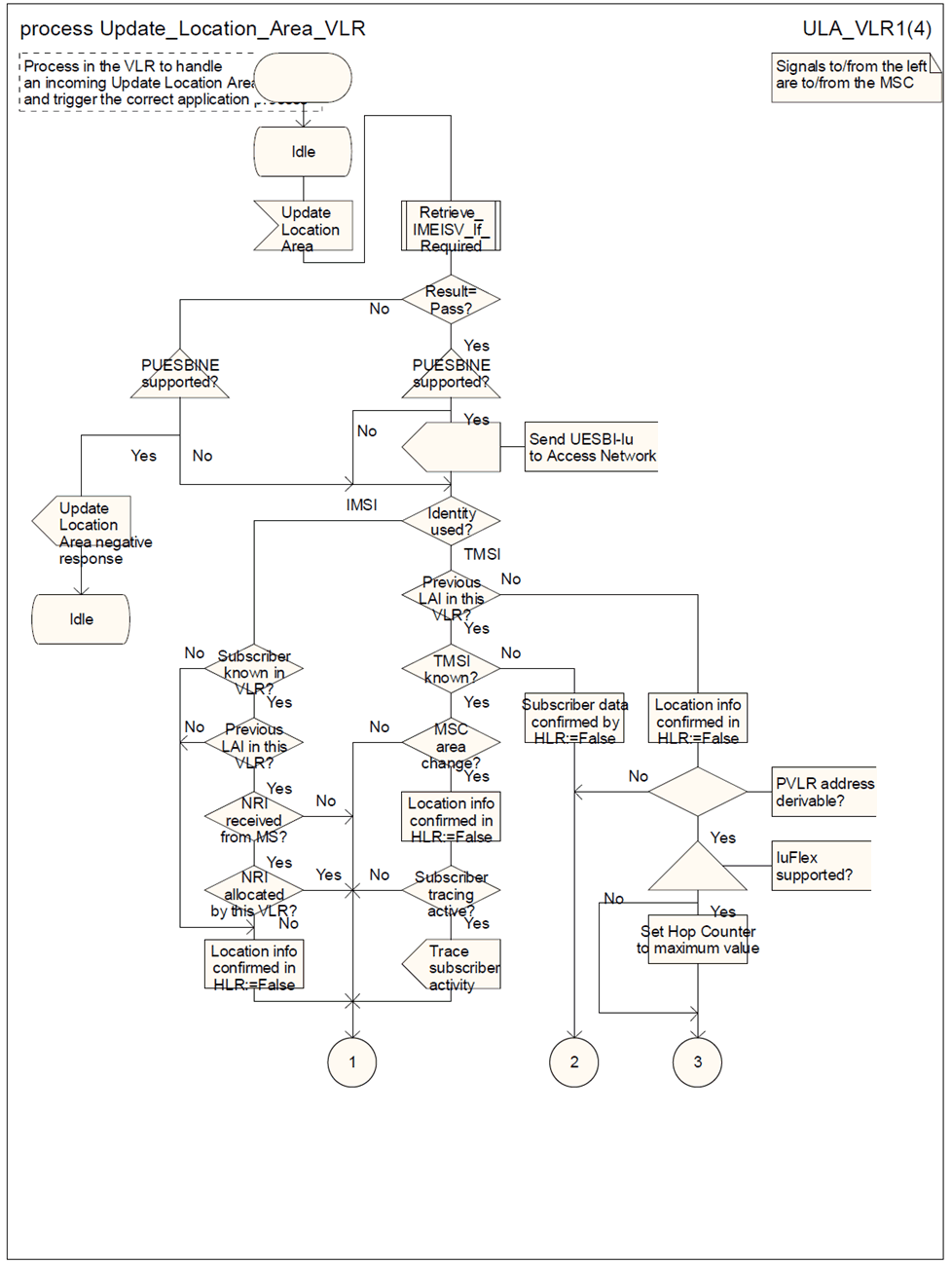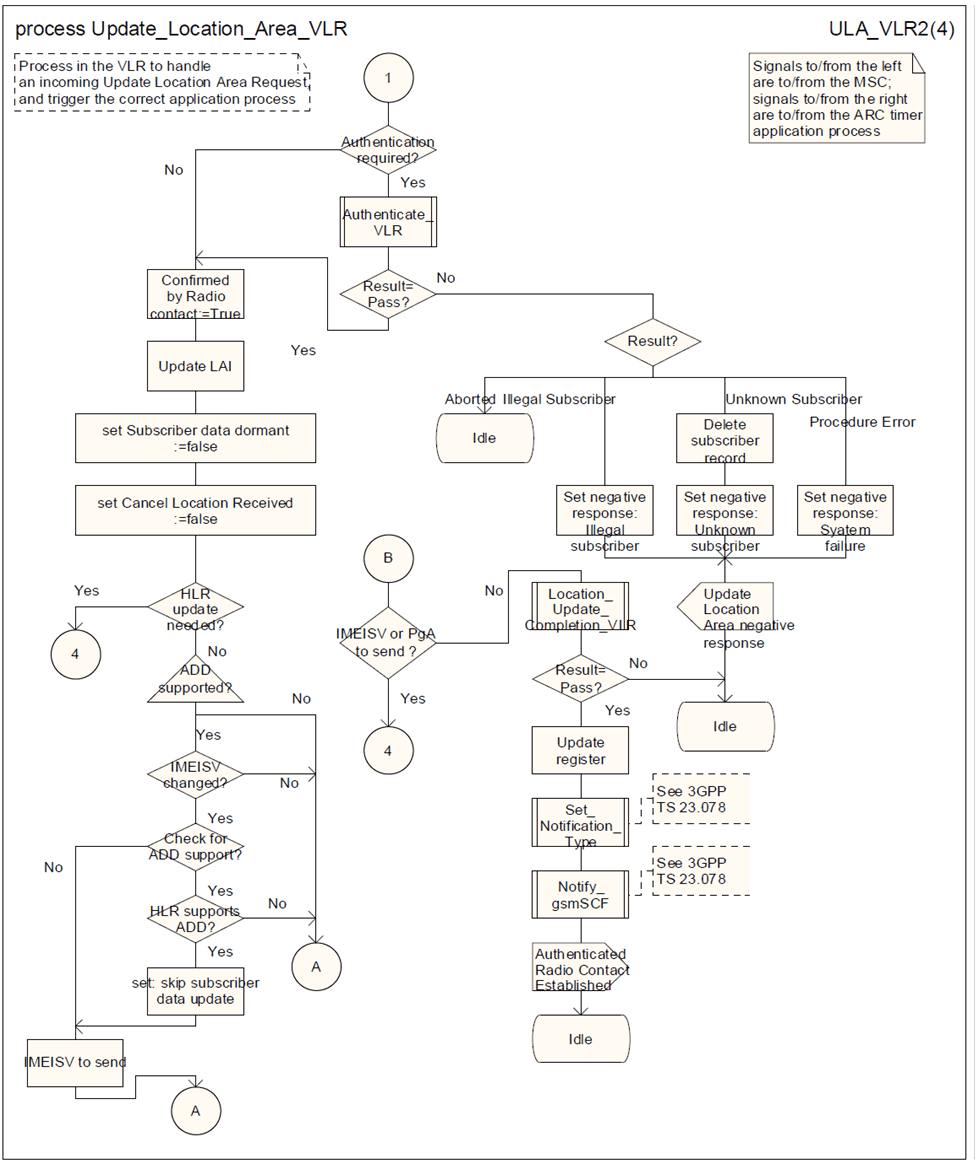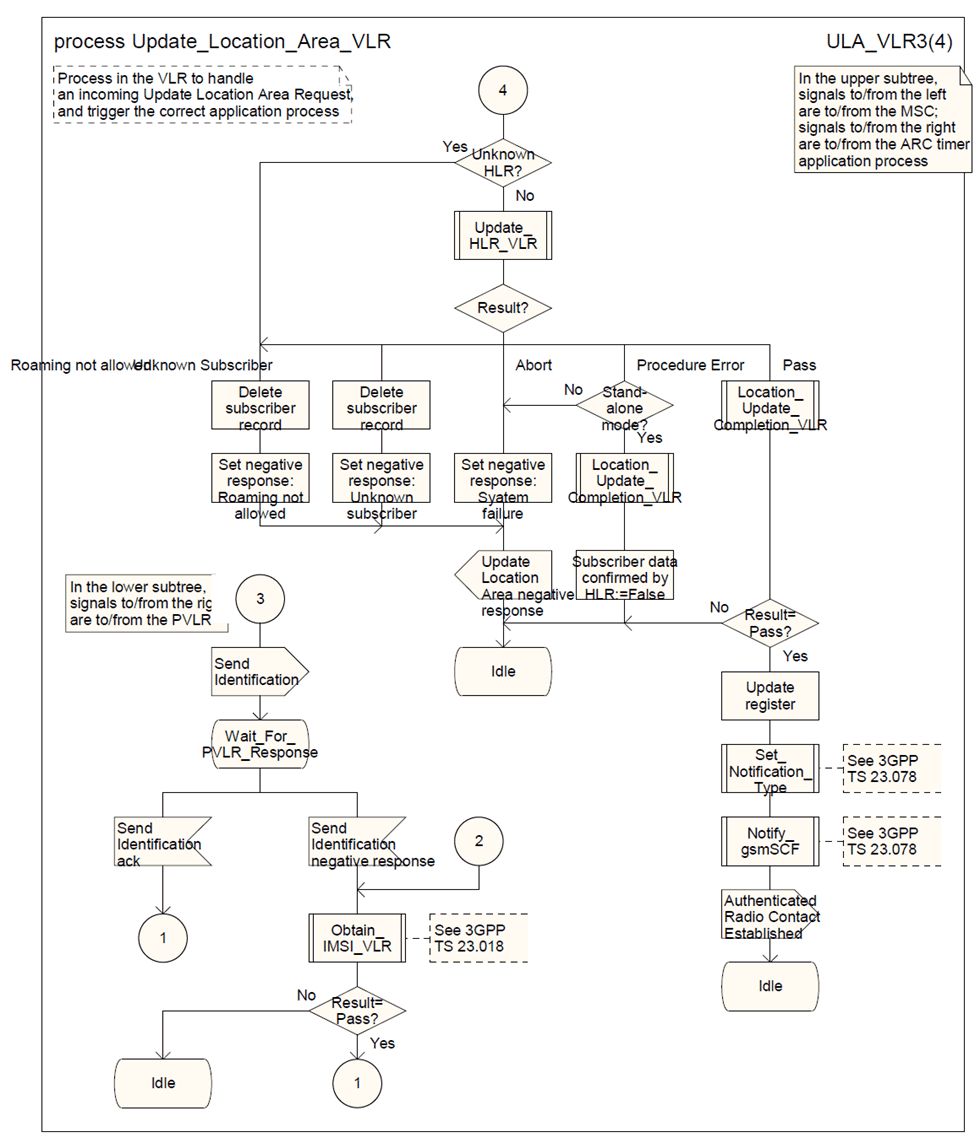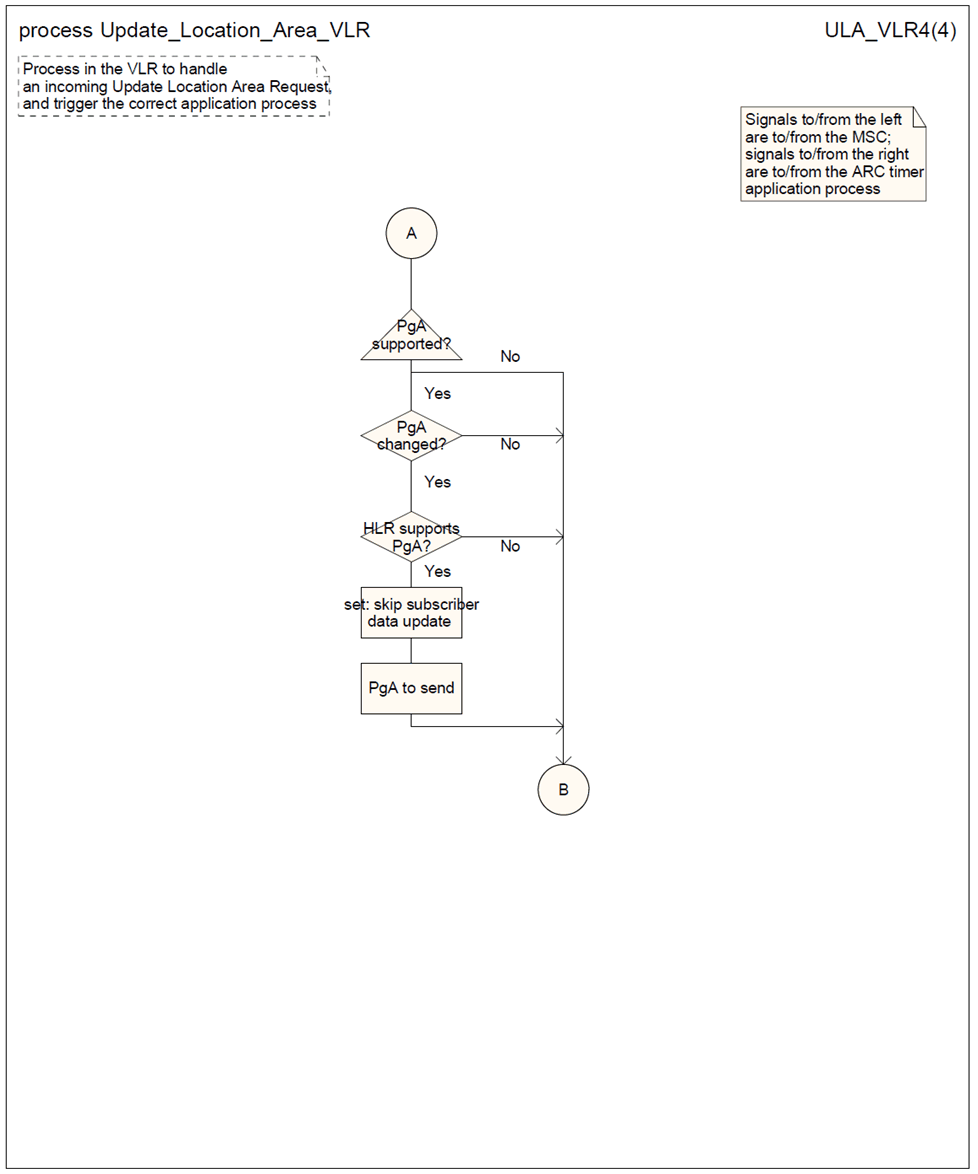Content for TS 23.012 Word version: 18.0.0
1…
4…
4.1.1.2
4.1.2…
4.1.2.1a
4.1.2.2
4.1.2.3
4.1.2.4…
4.1.2.6…
4.1.2.8…
4.1.2.10…
4.1.3…
4.1.3.2
4.1.3.3…
4.1.4…
4.2
4.2A
4.3
4.4…
4.1.2 Detailed procedure in the VLR p. 17
4.1.2.1 Process Update_Location_Area_VLR p. 17
General comment: at any stage in the location updating process the MSC may receive an indication from the BSS that the MM transaction has been released. The MSC then sends an Abort signal to the VLR. Upon receipt of this message, the VLR shall follow one of two possible courses of action.
The two possible courses of action and the conditions determining which course shall be taken are as follows:
- If a successfully authenticated radio connection is already established before the Abort message is received, the VLR shall ignore the message.
- If a successfully authenticated radio connection has not been established before the Abort message is received, the VLR shall abort the Update Location Area process and return to the idle state.
- Location Info Confirmed in HLR is false.
- Data Confirmed by HLR is false.



